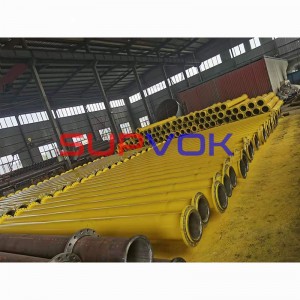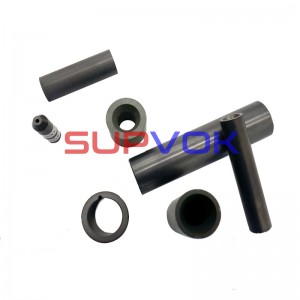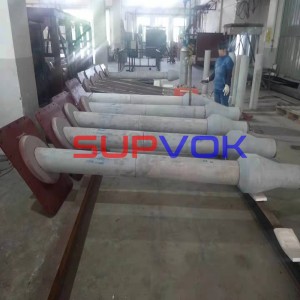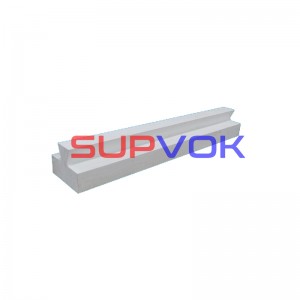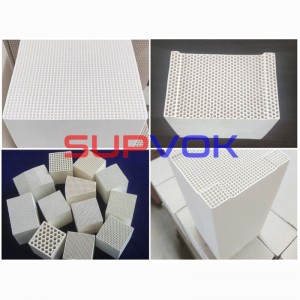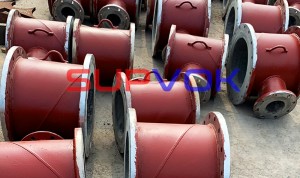Silicon nitride ceramic high thermal conductivity substrate and parts
Silicon nitride coil supports
Silicon nitride coil supports are widely used as sensors in underground mining, geological exploration and other fields.
As the coil rack of the sensor coil, the silicon nitride coil rack mainly applies the ultra-high hardness performance of silicon nitride ceramics and the nonmagnetic insulation of silicon nitride ceramics. As the sensor coil rack, it must be insulated and nonmagnetic in order to accurately transmit the collected data; At the same time, as a sensor for depth exploration, the underground environment is generally complex, and only the support with high hardness can protect the sensor from damage. In addition, the silicon nitride support has certain protective effects on the sensor coil due to its anti-corrosion, high and low temperature resistance, and low coefficient of thermal expansion.
Silicon nitride electrode protective cover
Silicon nitride electrode protective cover is mainly used for the insulation, heat resistance and corrosion resistance of silicon nitride. Compared with quartz and aluminum oxide protective covers still in use, the service life of silicon nitride electrode protective covers is more than 10 times that of silicon nitride electrode protective covers, and they will not be electrocuted, heated, or corroded during use. Due to its stability, there is much less non-human factors in the use of photovoltaic reduction furnace.
Silicon nitride (Si3N4) high thermal conductivity substrate
High thermal conductivity silicon nitride ceramic substrate
Features
►High strength: Bending strength is about twice that of AL2O3 and ALN substrates.
►High thermal conductivity: It is more than 3 times higher than AL2O3 substrate.
►Light and thin: its thickness can reach 1/2 of AlN substrate
►Excellent thermal shock resistance: its thermal expansion coefficient is close to that of silicon.
|
Item |
Unit |
Al2O3 |
AIN |
Si3N4 |
|
|
Density |
g/cm2 |
3.75 |
3.3 |
3.22 |
|
|
Thickness |
mm |
0.3175~1.0 |
0.4~2.5 |
0.238~0.635 |
|
|
Surface roughness level (Ra) |
μm |
0.4 |
0.2 |
0.4 |
|
|
Mechanical properties |
bending strength |
Mpa |
310~400 |
300~450 |
650 |
|
Young's modulus |
Gpa |
330 |
320 |
310 |
|
|
Vickers hardness |
Gpa |
14 |
11 |
15 |
|
|
fracture toughness |
Mpa.ml/2 |
3~4 |
2~4 |
5~7 |
|
|
Thermal expansion coefficient |
10 -6/K |
7.1~8.1 |
4.5~4.6 |
2.6 |
|
|
Thermal conductivity |
W/(m.K) |
20~30 |
160~255 |
60~120 |
|
|
Specific heat |
J/(kg/K) |
750 |
720 |
680 |
|
|
Electrical characteristics |
Dielectric constant |
/ |
9~10 |
8~9 |
7~9 |
|
Dielectric loss tangent |
...10-3 |
0.2 |
0.3 |
0.4 |
|
|
Volume resistivity |
Ω.m |
>1012 |
>1012 |
>1012 |
|
|
Breakdown voltage |
kv/mm |
>12 |
>14 |
>14 |
|





